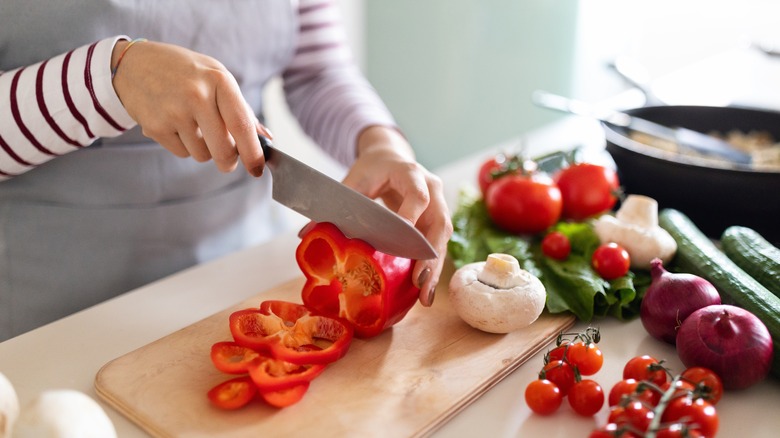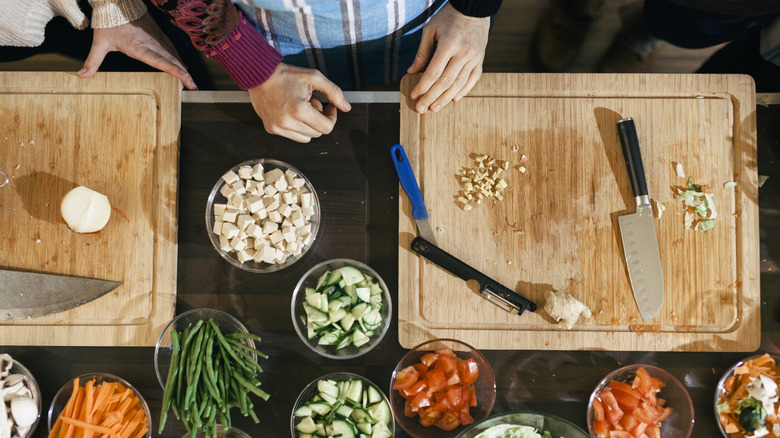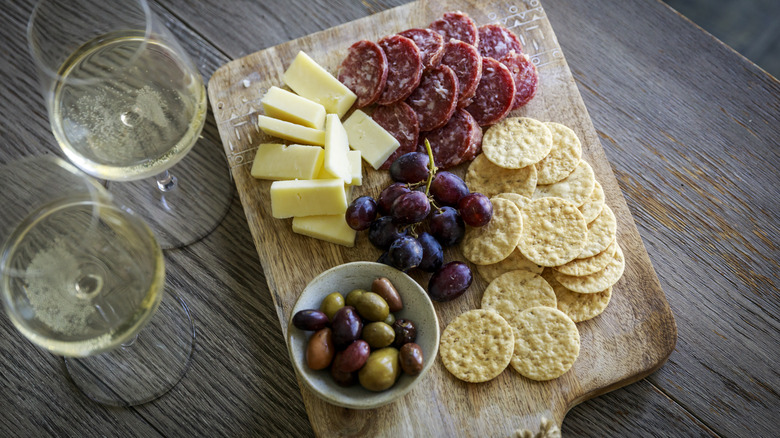The 2 Factors To Prioritize When Buying A Cutting Board
A top-quality cutting board is a must-have for any home chef, but selecting the right one is a surprisingly complex task. You have to consider everything from the material of the board to any special features it may have, such as gutters. However, some factors carry more weight, and the two most important are safety and practicality.
Selecting a safe cutting board is priority number one. There are bonus features a board may have to increase safety, such as rubber feet to prevent sliding. However, all you really need to ensure safety is a cutting board with enough space to properly wield a knife on it, and sufficient thickness for it to be stable.
Finding a practical cutting board is harder and more personal, since what you may find practical could be useless to another cook. To simplify the search, start by reducing practicality down to material and size. A plastic cutting board is more practical to those who don't want to hand wash wood boards, while a larger one just takes up space if you're only looking to cut sandwiches in half.
How to pick a safe cutting board
The number one consideration for picking a safe cutting board is getting a board that's big enough to comfortably hold what you plan to chop. If you often cut up large melons or slice a freshly baked pizza, you'll want to get the biggest board you can find. Even if you only cut up small items, such as hard-boiled eggs or apples, err toward a board that's slightly bigger than what you think you need. A complement to size is thickness; thicker boards are more stable and warp less, and less warping means fewer knife slips.
If you use your cutting board for multiple kinds of food, such as raw vegetables and raw meat, you should be looking for a few boards instead of just one. Using the same board can spread contamination between food groups. At minimum, you should have one board for raw meat and one board for everything else, with extras as practicality permits. Additionally, the raw meat board should be made of a non-porous material such as plastic, since it can be dangerous to cut meat on a wooden board.
Bonus features like feet and runners are nice to have, but you don't really need them. Accomplish the same task of preventing slippage by placing a towel or mat underneath the board.
How to pick a practical cutting board
The most important aspect in selecting a practical cutting board is its material. There are three primary materials for cutting boards: wood, plastic, and glass. Wood is the most durable, and practical for people who essentially live in the kitchen. However, it also requires consistent, time-consuming maintenance and is porous enough to absorb contaminants if not properly maintained.
Plastic is prone to scratching and staining, but you can safely toss it in the dishwasher when you're done. It's also non-porous, so there's no risk of absorbing contaminants if it isn't cleaned properly. You'll need to replace it more frequently, but it's generally the most practical option. Glass is neither safe nor practical for actual cutting since it causes knives to dull faster and easily slide. Not to mention, the glass could break and get into your food. Only use glass cutting boards to display finished meals.
Aside from material, consider the size and thickness of a board against your kitchen space and the food you plan on cutting. This is all about striking a balance, since you need boards that are large enough for safety, but not too large that they can't be easily stored or cleaned. Lastly, consider any bonus features that may be practical for you. Boards with gutters on the side can catch liquids from fruit and raw meat, for example, while a board with handles is great for mobility.


